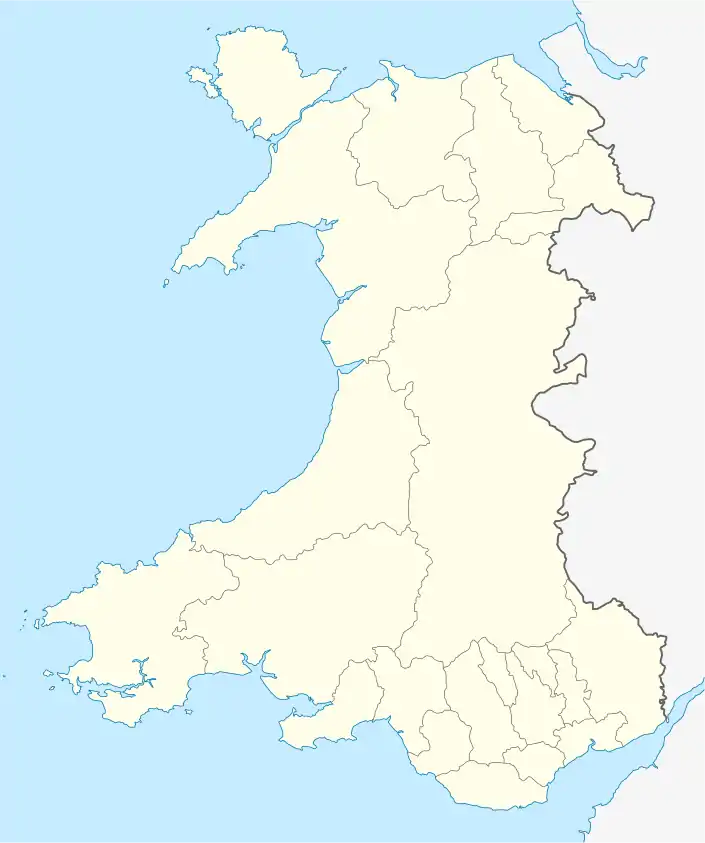Wern Ddu Claypits
Wern Ddu Claypits is a Site of Special Scientific Interest near Van in Caerphilly County Borough, South Wales. The woodland is known locally as Coed y Werin, which surrounds a 19th-century clay pit, dug to supply clay to the Caerphilly Brick Company. It is designated because of the important coal measure rocks exposed there.
| Site of Special Scientific Interest | |
 Location within Wales | |
| Area of Search | Gwent |
|---|---|
| Grid reference | ST1674785684 |
| Coordinates | 51.563864°N 3.2024493°W |
| Interest | Geology |
| Area | 6.48 ha |
| Notification | 1 January 1979 |
Geography
The Wern Ddu Claypits are located to the west of Caerphilly Town centre.[1] The site is measures around six hectares (15 acres).[2] The site is owned by the Caerphilly Woodland Trust and the Forestry Commission.[3]
History
The quarry at Wern Ddu is believed to be around 150 years old.[3] The area was the site of an opencast clay pit and a drift mine that provided material for brickmaking.[1][4] In the 1920s and 1930s the site was worked by the Black Vein Colliery and later the Caerphilly Brick Company.[5]
Production at the Claypits ceased in the 1960s and the area became largely derelict in the ensuing decades.[1] The site was designated a Site of Special Scientific Interest on 29 October 1984,[2] mainly due to large deposits of carboniferous and westphalian geology which are estimated to be up to 300-million years old.[1] Caerphilly County Borough Council describes the area as "one of the most important sites for helping understand the Westphalian geological history of the southern province of Britain."[2]
At the start of the 21st century, The Caerphilly Woodlands Trust took possession of the Claypits site and began developing the area.[1] In 2007, the Countryside Council for Wales carried out an extensive clear up process to develop the site for visitors.[3]
See also
- List of Sites of Special Scientific Interest in Mid & South Glamorgan
References
- "Wern Ddu". British Institute for Geological Conservation. Retrieved 11 March 2020.
- "Statutory Protected Sites for Biodiversity Conservation". Caerphilly County Borough Council. Retrieved 11 March 2020.
- "Quarry clearance is a rock-solid investment for Wales". WalesOnline. Media Wales. 27 March 2007. Retrieved 11 March 2020.
- "History". Caerphilly Woodlands Trust. Retrieved 11 March 2020.
- "Coal seam excavated for heritage in Caerphilly woodland". BBC Sport. 31 August 2010. Retrieved 11 March 2020.